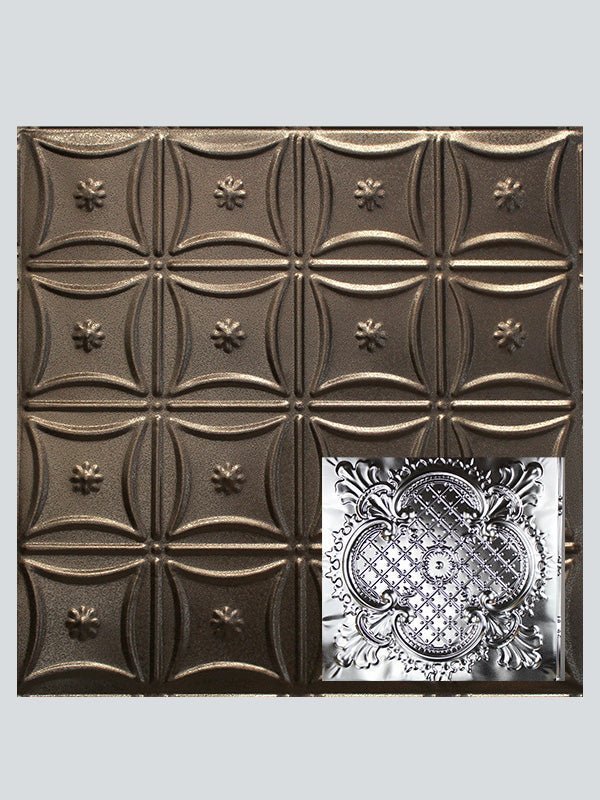Hand-finishing tin ceiling tiles is an art form that brings depth, texture, and individuality to an otherwise plain surface. The difference between an ordinary ceiling and one that feels polished and luxurious often comes down to the tools used during the finishing process. Whether you’re looking for a subtle antique wash or a bold metallic sheen, selecting the right brushes, rollers, cloths, and products makes all the difference.
This guide breaks down the tools for hand-finishing tin tiles and explains how each one contributes to achieving professional-level results at home.
Why Tools Matter in Hand-Finishing
When working with pressed tin tiles, the embossed patterns are full of grooves, ridges, and raised details. The wrong tools can result in streaks, uneven coverage, or finishes that fade prematurely. On the other hand, the right tools allow you to layer colors, highlight intricate patterns, and protect the tile for long-lasting beauty.
Think of your tools as extensions of your craftsmanship. Just as an artist wouldn’t rely on a single brush for every stroke, finishing tin tiles requires a combination of applicators and products to achieve the desired look.
Essential Brushes for Precision
Brushes are the cornerstone of hand-finishing. They offer control, versatility, and the ability to reach into recessed areas of tin tiles.
-
Natural Bristle Brushes: Ideal for oil-based paints, glazes, and waxes. Their slightly uneven texture allows finishes to settle into grooves, enhancing detail.
-
Synthetic Bristle Brushes: Better for water-based finishes. They apply smoothly and evenly without absorbing too much product.
-
Artist Detail Brushes: Useful for highlighting specific parts of a pattern with metallic or accent colors. Perfect for small flourishes that make a tile pop.
-
Stippling Brushes: Designed for dabbing techniques that add dimension, particularly effective when applying antique finishes or layered patinas.
A mix of brush sizes ensures you can cover broad areas while also giving attention to fine details.
Rollers for Larger Coverage
While brushes are great for precision, rollers are excellent when you need to cover large areas quickly and evenly.
-
Foam Rollers: Provide a smooth, even coat without leaving bristle marks. Best for applying base coats or sealants.
-
Textured Rollers: Some DIYers use lightly textured rollers to create subtle patterns or variations in the finish. This can add character to otherwise flat surfaces.
-
Mini Rollers: Perfect for smaller tiles or for working in tight areas where standard rollers are too large.
Using rollers in combination with brushes speeds up the process while keeping the look professional.
Cloths and Sponges for Blending
Not all finishing is about direct application. Sometimes, removing or blending the finish is just as important as putting it on. That’s where cloths and sponges come in.
-
Lint-Free Cloths: Used for wiping away excess glaze or stain, ensuring the raised details remain highlighted.
-
Tack Cloths: Essential for cleaning dust or debris before and during the finishing process. A clean surface ensures even application.
-
Natural Sea Sponges: Offer organic textures when dabbing on paint or glaze, creating one-of-a-kind effects.
-
Microfiber Rags: Ideal for buffing wax finishes or polishing metallic accents to achieve a subtle shine.
These materials give you the ability to control depth, transparency, and texture—turning a flat finish into a dynamic one.
Products That Elevate the Finish
The tools you choose must pair with the right finishing products to achieve the look you want.
-
Metallic Paints: Available in gold, silver, bronze, and copper, metallic paints highlight embossed patterns and add shimmer.
-
Patinas and Glazes: Used to create antique or weathered effects. These products settle into grooves and give tiles an aged, dimensional look.
-
Sealants: Clear protective coatings that lock in your finish, preventing wear from moisture or cleaning.
-
Waxes: Applied with cloths or brushes, waxes give a soft sheen and help protect finishes from scratches.
By layering these products with the correct tools, you can create everything from subtle satin effects to bold, dramatic ceilings.
Combining Tools for Layered Effects
Professional-looking hand-finishing usually involves a combination of techniques and tools. For example:
- Start with a foam roller to apply a uniform base coat.
- Use a natural bristle brush to add a glaze that settles into recessed patterns.
- Remove excess glaze with a lint-free cloth, leaving darker tones in the grooves.
- Highlight raised details with a small artist brush and metallic paint.
- Finish with a wax cloth or sealant roller for protection.
This layered approach ensures your ceiling tiles not only look beautiful but also hold up over time.
DIY vs. Professional Tools
For homeowners new to finishing projects, it may be tempting to buy budget tools. While affordable options work for practice, investing in professional-quality brushes and rollers pays off in smoother application, less waste, and longer tool life.
Professional-grade tools are designed to minimize shedding, hold more product, and deliver consistent results. If you’re working on a large ceiling project, these differences are especially noticeable.
Practical Tips for Success
Here are a few tips to get the most out of your tools and finishes:
-
Prep the Tiles First: Always clean and dry tiles thoroughly before starting. Dust or oils can interfere with adhesion.
-
Test on a Sample: Before finishing your full ceiling, practice on a single tile to fine-tune your technique.
-
Use Light Layers: Multiple thin coats give better results than one heavy coat, reducing streaks and drips.
-
Maintain Your Tools: Clean brushes, rollers, and cloths promptly after use. Proper care extends their lifespan.
These steps ensure your tools perform their best throughout the entire project.
Transforming Spaces with the Right Tools
The right tools for hand-finishing tin tiles can make all the difference in the outcome of your project. Brushes bring detail into focus, rollers provide even coverage, and cloths or sponges add texture and balance. Combined with quality finishing products, these tools empower homeowners and designers to create ceilings that transform rooms into extraordinary spaces.
Whether your goal is a subtle antique patina or a bold metallic statement, having the right tools in hand ensures that your ceiling tiles will look professional, polished, and truly unforgettable.

